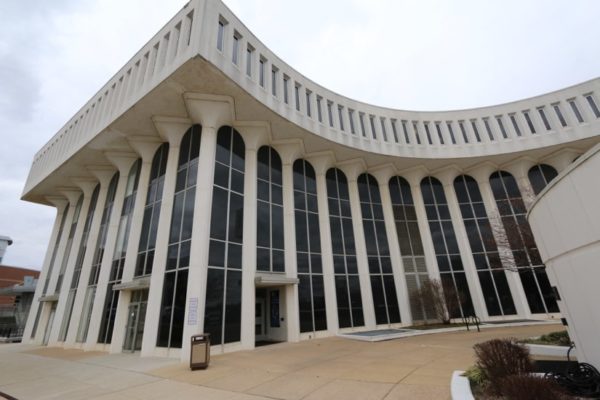For the past year, Arlington Public Schools students have been learning from home to varying degrees of success.
As of this morning (Tuesday), all grade levels have access to two days a week of in-person instruction. Some have struggled during remote learning — as is evidenced by dropping GPAs and rising rates of students failing classes. But others, according to APS officials, are excelling.
“We know right now that some students are really thriving in this virtual environment so we want to be able to keep that option open to those students,” said Sarah Putnam, the Director of Curriculum and Instruction for APS, during a virtual open house last month.
For these middle- and high-school students, virtual learning — either hybrid or full-time — could be an option as early as the 2022-23 school year. The program could be located in the revamped Education Center at 1426 N. Quincy Street, the former APS administrative building next to Washington-Liberty High School.
Extending virtual and hybrid learning options for secondary-level students beyond the pandemic could help relieve some school capacity pressures, instructional leaders and School Board members say. It would also leverage existing technology investments while letting students pursue extracurricular opportunities and, potentially, take more classes to accelerate their learning or recover credits.
“We’re really excited about this idea,” said Jonathan Turrisi, the Director of Strategic Planning for APS, during the same open house.
School staff are still working through the logistics. If the School Board approves this option, it would not start until next fall at the earliest.
More information will be presented to the School Board on April 8. Members have indicated an interest in long-term virtual learning.
“The School Board believes virtual school is an important consideration to factor into long-term planning, given that many students have been successful in distance learning,” members told ARLnow in a joint statement. They said APS will still need to examine numerous factors to see what such a program would look like and if the school system can afford it.
One of those factors would be if it is appropriate for middle-schoolers, Board Member David Priddy said during a February meeting.
“From being around middle schoolers, I’m not sure if the virtual piece would align with that many middle schoolers just simply because their social-emotional needs are different,” he said. “I guess we can throw that out to the public to decide.”
The program would likely be located on one floor the Education Center, which could accommodate 100-300 students, Assistant Superintendent of Teaching and Learning Bridget Loft said at the February meeting.
The renovated building, which is set to open next year, will have a total of 500-600 additional high school seats. A portion of the seats would allow W-L to include every student who is interested in its popular International Baccalaureate program. Annually, about 80 students are waitlisted for IB.
“It is a priority to expand access to the IB program,” Turrisi said.
Ten-year projections indicate W-L will not need all the seats at the Ed Center until after 2030, Loft noted. During that time, however, other capacity concerns will need to be relieved, and full-time virtual learning would help, Turrisi said.
Capacity can impact the courses schools offer. Some topics, such as specific world language classes, may not generate enough interest within a building to justify being offered, but could be offered virtually to interested students across the county, Putnam said.
The program would also put to use the investments APS made into devices, hotspots and tools for remote learning, as well as the time and effort that teachers put into adapting their curricula.
“APS has invested significant resources in devices and connectivity for all students, as well as professional learning for staff to facilitate and continually strengthen distance learning,” the School Board statement said. “We believe it is important to explore how we can take the lessons we have learned and the benefits of the distance learning model forward even as in-person instruction resumes.”
APS administrators are mulling the possibility of a virtual learning program as part of a high-level planning project called the Instructional Programs and Pathways, or IPP.
Loft said the IPP is a framework that will guide APS as it decides if it will add programs, including a potential virtual-learning model, or modify existing programs.
“I think it’s fiscally irresponsible for us to propose new pathways before we recognize the value our existing programs bring,” Loft said. “We want to be sure that our existing programs are offering our students the best of what we can offer.”


